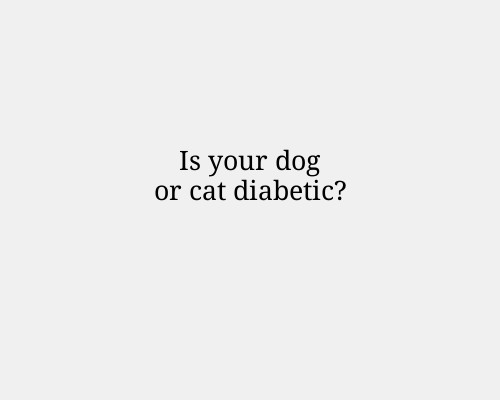Is your dog or cat diabetic?

There are several symptoms that may suggest that your dog is diabetic, including:
- Increased thirst and urination: Dogs with diabetes may drink more water and urinate more frequently due to high blood sugar levels.
- Weight loss: Despite eating more, dogs with diabetes may lose weight due to their body’s inability to use glucose for energy.
- Hunger: Dogs with diabetes may feel hungry more often due to their body’s inability to properly use glucose for energy.
- Lethargy: Diabetes can cause a lack of energy in dogs, leading to lethargy and a lack of interest in normal activities.
- Changes in appetite: Dogs with diabetes may have a decreased appetite or may become more finicky about their food.
- Vision changes: Diabetes can cause vision changes in dogs, including blurry vision or blindness.
If you suspect that your dog may be diabetic and a vet is not immediately available, it’s important to monitor your dog’s symptoms and behavior closely. If your dog is experiencing severe symptoms or is showing signs of distress, it’s important to seek emergency veterinary care as soon as possible.
If your dog is stable but you are unable to see a vet right away, you can try to manage your dog’s diabetes at home by following the treatment plan recommended by your vet. This may include administering insulin as directed, monitoring your dog’s blood sugar levels, and following a special diet. It’s important to follow your vet’s instructions carefully and to contact your vet if you have any concerns or questions about your dog’s treatment.





